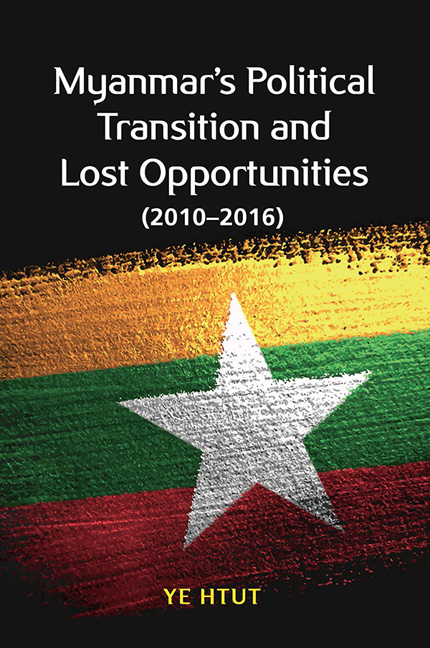Book contents
- Frontmatter
- Contents
- Foreword
- Acknowledgements
- Introduction: Myanmar's Political Reforms
- 1 The National Convention
- 2 The Constitution
- 3 The Union Solidarity and Development Party
- 4 Myanmar Spring and Aung San Suu Kyi
- 5 The Union Government
- 6 The Government and the Parliament
- 7 Shwe Mann's Checkmates
- 8 Turning Points
- 9 Media Reform
- Epilogue
- Appendix A President Thein Sein's Inaugural Address
- Appendix B President Thein Sein's First Address to the Cabinet
- List of Interviewees
- Index
- About the Author
- Plate section
- Frontmatter
- Contents
- Foreword
- Acknowledgements
- Introduction: Myanmar's Political Reforms
- 1 The National Convention
- 2 The Constitution
- 3 The Union Solidarity and Development Party
- 4 Myanmar Spring and Aung San Suu Kyi
- 5 The Union Government
- 6 The Government and the Parliament
- 7 Shwe Mann's Checkmates
- 8 Turning Points
- 9 Media Reform
- Epilogue
- Appendix A President Thein Sein's Inaugural Address
- Appendix B President Thein Sein's First Address to the Cabinet
- List of Interviewees
- Index
- About the Author
- Plate section
Summary
Senior General Than Shwe
Senior General Than Shwe was the mastermind of Myanmar's transition to democracy. The 2008 constitution was his brainchild. Under the 2008 constitution, the Tatmadaw does not play a leading role in day-to-day executive or legislative matters, but it serves as a gatekeeper for the constitution. This role is ensured by the twenty-five per cent of seats in all hluttaw filled by non-elected military officers, ensuring that the constitution cannot be amended without their agreement.
Than Shwe laid down the seven-step road map to democracy and created the political space in which the major players in Myanmar's politics—political parties, the military and ethnic armed organizations— can work together and build trust with each other. Than Shwe always said if all the stakeholders were able to build trust, they could amend the constitution in the future. However, few believed his road map would bring a bloodless democratic transition to Myanmar.
Than Shwe created the Union Solidarity and Development Association (USDA). Later, as the Union Solidarity and Development Party (USDP), it served as a political machine to implement his road map. He also ordered the construction of many infrastructure projects throughout the country, including the future capital, Naypyitaw. Than Shwe, however, paid very little attention to institution building. The only institution he prepared to serve the new political landscape was the Tatmadaw. Even the USDP lacked the concrete foundation of a true political party, being united only by his authority. When Than Shwe left the political scene, the USDP collapsed because of factionalism.
Than Shwe selected loyal and humble Thein Sein to lead the transition. He believed Thein Sein would never overstep his power but would dutifully implement the reform according to the 2008 constitutional framework. But Than Shwe made a mistake in selecting the very ambitious Shwe Mann as deputy chairman of the USDP and Speaker of the Pyithu Hluttaw. He underestimated Shwe Mann's ego and bitterness. If Shwe Mann had been president and Thein Sein Speaker of the Hluttaw, Thein Sein would never have plotted against Shwe Mann.2 If Than Shwe had asked Shwe Mann to retire with him and Vice Senior General Maung Aye and had appointed Htay Oo (secretary of the USDP) as Speaker, the clash between the executive and the Hluttaw would never have materialized.
- Type
- Chapter
- Information
- Publisher: ISEAS–Yusof Ishak InstitutePrint publication year: 2019

